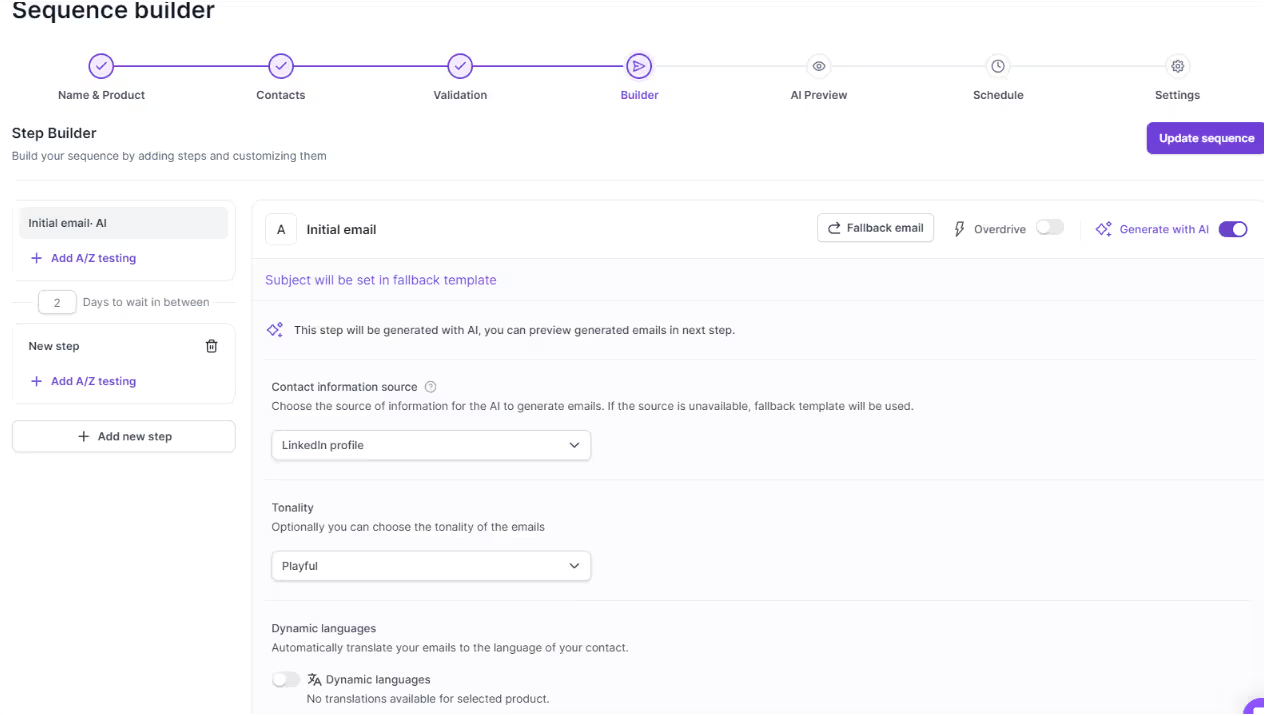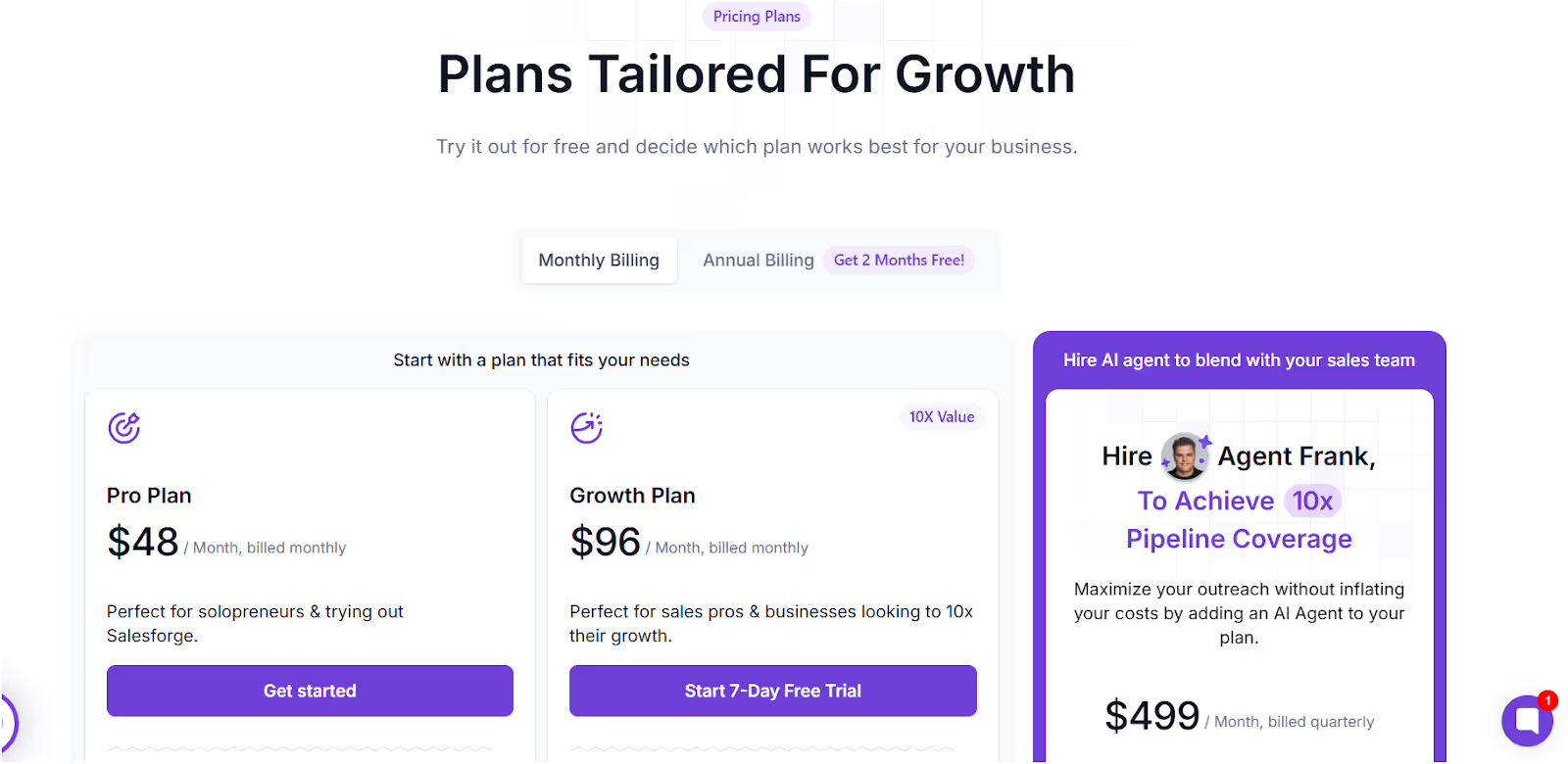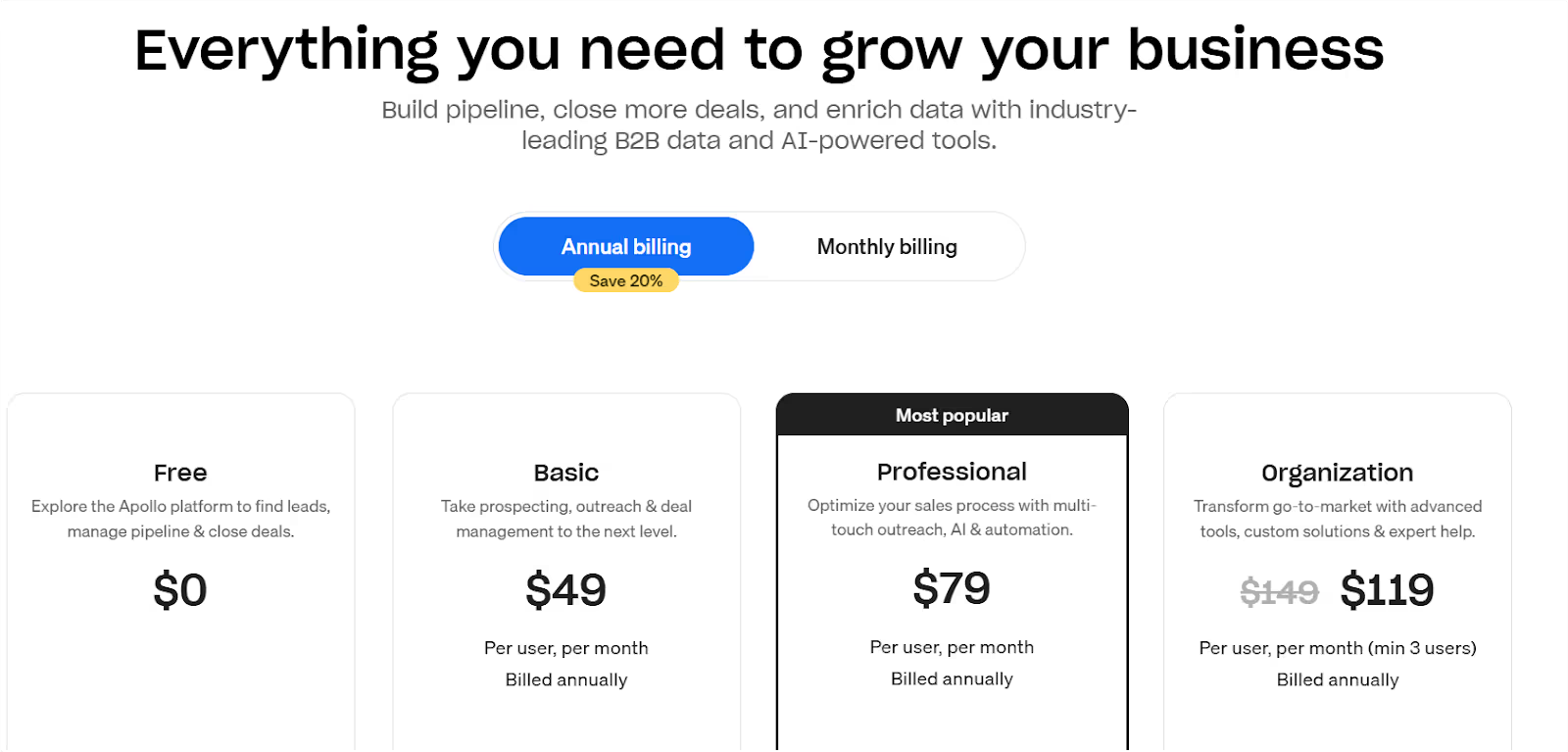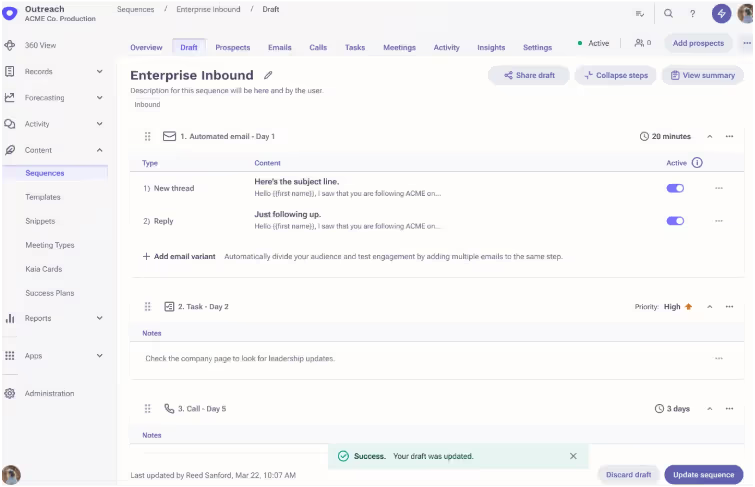Virtual Sales Assistant: How To Find The Best in 2025?
Finding leads, sending emails, following up, and keeping track of everything takes a lot of time.
A Virtual Sales Assistant helps make things easier.
It can:
✅ Find leads.
✅ Send outreach messages.
✅ Manage your pipeline.
✅ Give insights.
Some Virtual Sales Assistants completely automate the sales process from finding leads to follow-ups.
Others are human-based and help with manual tasks like CRM updates.
So, how do you choose the right one?
In this guide, I’ll break it down for you:
👉 Why businesses are using Virtual Sales Assistants in 2025.
👉 The good and bad—what they can (and can’t) do.
👉 Features you must have when picking one.
👉 A quick comparison of the best tools.
By the end, you’ll know exactly which Virtual Sales Assistant is right for you.
Let’s jump in. 🚀
What Is a Virtual Sales Assistant?
A Virtual Sales Assistant helps sales teams find leads, send outreach messages, follow up, and manage the sales pipeline.
AI-Based vs. Human-Based Virtual Sales Assistants
- AI assistants automate tasks like email outreach, lead scoring, and follow-ups. They work 24/7, scale easily, and analyze data for better targeting.
- Human-based assistants are remote workers who handle manual tasks like CRM updates and scheduling calls.
They offer a personal touch but can be slower and more expensive.
How Virtual Sales Assistants Fit Into Your Sales Workflow?

- Lead Generation: Find and qualify prospects automatically.
- Outreach: Send personalized emails, LinkedIn messages, and follow-ups.
- Pipeline Management: Keep track of deals and customer interactions.
- Analytics: Provide insights on what’s working and what’s not.
Sales teams use Virtual Sales Assistants to save time, increase efficiency, and focus on closing deals instead of manual tasks.
Let’s talk about why more companies are using them in 2025.
Why Do Businesses Need a Virtual Sales Assistant?
Finding the right leads, reaching out at the right time, and keeping track of conversations takes a lot of work.
A Virtual Sales Assistant helps businesses handle these challenges by automating the process.
Common Sales Challenges (and How a Virtual Sales Assistant Solves Them)
Too Many Leads, Not Enough Time
Manually sorting through hundreds of leads is overwhelming.
A Virtual Sales Assistant qualifies and prioritizes them so sales teams focus on the best ones.
Outreach Is Slow and Inconsistent
Following up manually takes time, and missed follow-ups mean lost deals.
Virtual Sales Assistants automate emails, LinkedIn messages, and reminders—so no lead falls through the cracks.
Too Much Manual Prospecting
Sales reps spend hours researching and entering data instead of selling.
A Virtual Sales Assistant collects contact info, tracks interactions, and updates CRMs automatically.
No Data-Driven Decision Making
Without analytics, sales teams guess what works.
Virtual Sales Assistants track engagement, response rates, and pipeline health, helping teams improve strategies with real data.
Now, let’s look at the real advantages and disadvantages of using a Virtual Sales Assistant 🚀
The Pros and Cons of Using a Virtual Sales Assistant
Virtual Sales Assistants can transform how sales teams operate, but they’re not perfect.
Let’s break down the biggest benefits and biggest challenges so you know exactly what to expect.
The Benefits of Using a Virtual Sales Assistant
Increased Productivity –
Sales reps waste too much time on admin tasks.
A Virtual Sales Assistant handles research, data entry, and follow-ups, so reps can focus on closing deals.
Scalability –
Whether you need to send 100 or 10,000 outreach messages, a Virtual Sales Assistant can handle the workload without adding more staff.
Better Lead Qualification –
AI assistants analyze data and rank leads based on buying intent. This means reps only spend time on the best prospects.
Cost-Effectiveness –
Instead of hiring more SDRs, a Virtual Sales Assistant automates prospecting and outreach at a fraction of the cost.
Personalization at Scale –
AI-driven assistants craft personalized emails and messages without manual effort. Every prospect gets tailored outreach, improving response rates.
Data-Driven Decisions –
Track open rates, reply rates, and conversions in real time. Sales teams can see what’s working and optimize their strategy instantly.
A Virtual Sales Assistant is not a magic fix for everything.
Let’s talk about the challenges.
The Downsides & Challenges of Virtual Sales Assistants
Lack of Human Touch –
AI can personalize messages, but it can’t fully replace human intuition in sales conversations.
Complex deals still need human interaction.
Data Accuracy Issues –
AI is only as good as the data it’s trained on.
Bad data = bad outreach.
If your CRM is messy, expect irrelevant or misdirected messages.
Learning Curve & Setup Time –
AI tools aren’t plug-and-play.
They require time to train, integrate with existing tools, and fine-tune messaging strategies.
Dependence on Technology –
If the software glitches or goes down, your outreach stops.
Over-reliance on automation can be risky if not managed well.
Compliance & Privacy Risks –
Sales outreach must follow GDPR, CCPA, and other regulations.
Mishandling customer data could lead to fines or reputation damage.
For most businesses, the benefits far outweigh the challenges—as long as you choose the right one and set it up correctly.
Let’s get into what to look for when picking the best Virtual Sales Assistant. ⬇️
Key Features to Look for in a Virtual Sales Assistant
Not all Virtual Sales Assistants are built the same.
To find the right one, look for these must-have features that make a real difference in sales performance.
✅ Complete Automation
- Does it handle prospecting, follow-ups, and lead nurturing automatically?
- Can it schedule emails, track responses, and adjust outreach based on engagement?
The best assistants don’t just send messages—they learn and optimize based on real-time data.
✅ CRM & Tool Integration
- Does it connect with your existing CRM (HubSpot, Salesforce, etc.)?
- Can it sync with email, LinkedIn, and other sales tools?
Seamless integration means no manual data entry and a smoother workflow.
✅ Multi-Channel Outreach
- Can it send emails, LinkedIn messages, calls, and SMS?
- Does it automate follow-ups across different platforms?
A good Virtual Sales Assistant helps you reach leads wherever they are.
✅ Intent-Based Lead Targeting
- Can it analyze buying signals and engagement levels?
- Does it prioritize high-intent leads instead of reaching out blindly?
You want a tool that targets the right prospects at the right time, not just blasts emails to everyone.
✅ Personalization at Scale
- Does it craft dynamic, AI-driven personalized messages?
- Can it adapt messaging based on industry, role, or past interactions?
The best assistants make outreach feel human, even when it’s automated.
✅ Performance Tracking & Analytics
- Does it show open rates, reply rates, and conversion rates?
- Can you see which messages and strategies work best?
Without analytics, you’re just guessing. A good assistant tracks everything and helps you optimize.
✅ Ease of Use & Scalability
- Is it easy to set up and use without technical expertise?
- Can it scale with your business as outreach needs grow?
You don’t want to spend weeks setting up a tool—it should work fast and grow with you.
Now that you know what to look for, let’s compare the top Virtual Sales Assistants in 2025 to help you make the best choice. ⬇️
Best Virtual Sales Assistants in 2025: A Quick Comparison
Choosing the right Virtual Sales Assistant depends on your business needs.
Here’s a side-by-side breakdown of three of the top options in 2025: Salesforge, Apollo.io, and Outreach.io.
#1 Salesforge – AI-Powered, High-Deliverability Cold Outreach

Salesforge isn’t just another outreach tool—it’s built to help you scale sales effortlessly with AI-driven agents that create and optimize your cold email campaigns.

Instead of relying on generic automation, Salesforge’s AI agents:
✅ Write unique, human-like emails that drive real engagement.
✅ Continuously optimize messaging to improve reply rates.
✅ Maximize deliverability to keep your emails out of spam folders.
With Salesforge, you’re not just automating outreach—you’re deploying AI agents that work around the clock to build a high-quality sales pipeline.
✅ Strengths:
- Email Personalization – Every email is uniquely crafted, avoiding spam filters and increasing engagement..

- Advanced Deliverability Tools – Built-in warm-up, domain monitoring, and inbox rotation.
- Multi-Channel Outreach – Integrates LinkedIn touchpoints with email sequences.
- AI Agents Like ‘Agent Frank’ – Automates outreach while keeping messages human-like.

- Multi-Language Support – Send emails in 20+ languages.
❌ Weaknesses:
- No Built-in Lead Database – You need to import your own leads.
- Scaling AI Agents Costs Extra – Higher-tier plans can get expensive.
Salesforge Pricing:

Starts at $40/month, with AI-driven automation plans at $416/month.
Best for:
Sales teams, lead gen agencies, recruiters, and founders who want high-quality AI-driven outreach.
#2 Apollo.io – Massive Lead Database + Multi-Channel Outreach

Apollo.io is a mix of lead generation and sales automation, with 210M+ contacts available for prospecting.
It’s a built-in CRM enrichment and intent-based lead targeting.
✅ Strengths:
- Huge Lead Database – Access 210M+ contacts & 35M+ companies.
- Multi-Channel Outreach – Email, LinkedIn, and calls all in one platform.
- CRM & Sales Engagement Tools – Automates sequences and enriches contact data.
❌ Weaknesses:
- Inconsistent Data Quality – Some contacts are outdated, leading to bounce issues.

- Email Deliverability Problems – Despite verification, emails sometimes go to spam.
- Overcomplicated UI – Too many features make it hard for beginners.
Pricing:

Starts at $49/month (Free plan available).
Best for:
Sales teams, startups, and revenue ops looking for built-in lead data + outreach automation.
Top 3 Apollo Email WarmUp Alternatives For Better Deliverability
#3 Outreach.io – Enterprise-Grade Sales Engagement (But Expensive)

Outreach.io is a well-known sales engagement platform designed for large teams.
It has advanced automation features but comes with complex pricing and setup.

✅ Strengths:
- Automation at Scale – Handles large outreach campaigns with email sequences & workflows.

- A/B Testing & Multi-Touch Cadences – Great for optimizing sales engagement.
- Integrations with Gmail & Salesforce – Works well if you’re in that ecosystem.
❌ Weaknesses:
- Pricing Is Hidden & Expensive – No transparent pricing, and contracts auto-renew.
- Poor Customer Support – Many users complain about slow responses and unresolved issues.

- Difficult to Set Up & Use – Bugs and technical issues make implementation a hassle.
- Aggressive Sales Tactics – Pushy sales reps and upselling frustrate users.

Outreach Pricing:
Not publicly available—requires a demo.
Best for:
Enterprise teams with large budgets need full sales engagement automation.
Which Virtual Sales Assistant Should You Choose?
👉 Choose Apollo.io if you need a large contact database + affordable prospecting tools.
👉 Choose Outreach.io if you’re an enterprise team that needs full-scale sales engagement (and don’t mind high costs).
Final Thoughts: Which Virtual Sales Assistant Should You Choose?
We’ve covered everything about Virtual Sales Assistants—their role, benefits, and what to watch out for. Here’s what really matters:
✅ They handle lead generation, outreach, and follow-ups, saving you hours of manual work.
✅ They help you scale your sales efforts without constantly hiring more reps.
✅ Some offer better automation and personalization, while others still require too much manual effort.
✅ The best choice depends on your sales process, budget, and growth goals.
Now, if you’re looking for a virtual sales assistant that actually delivers results, Salesforge is a solid option.
- Automated prospecting & outreach—so you can focus on closing deals.
- Personalized messaging that resonates with your leads.
- High email deliverability to keep your outreach out of spam folders.
It won’t replace your sales team, but it will help you reach more prospects, book more meetings, and close deals faster.
If you need a scalable and reliable sales assistant, Salesforge is the one.
Your sales process is only as strong as the tools you use. Choose wisely. 🚀

.avif)

.avif)
.avif)